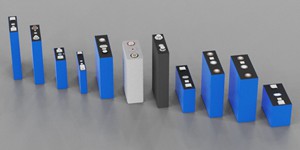LITHIUM IRON MANGANESE PHOSPHATE HAS A SIGNIFICANT COST-EFFECTIVENESS ADVANTAGE
By Kelly posted 2022-07-16 23:44:21Lithium iron manganese phosphate battery, compared with lithium iron phosphate, it has higher energy density, is safer and has advantages in cost compared with ternary, and has a wide range of downstream application scenarios. Leading manufacturers take the lead in the layout and have a first-mover advantage.
Architecture preserves batteryCycling performance, Mn-Fe doping ratio affects energy density. Lithium manganese iron phosphate (LiMnxFe1-xPO4) is a new type of phosphate lithium-ion battery cathode material formed by doping a certain proportion of manganese (Mn) on the basis of lithium iron phosphate (LiFePO4). Lithium manganese iron phosphate (LMFP) can maintain the stable olivine architecture of lithium iron phosphate, thereby preserving battery cycling performance while improving energy density by increasing voltage. The different doping ratios of manganese and iron in lithium iron manganese phosphate affect its performance. The optimal ferromanganese ratio is at least 1:1 or more, and for the solid state preparation method, the energy density is ideal when the ratio of manganese to ferromanganese is about 4:6.
The energy density is higher than that of lithium iron phosphate, and the cost has an advantage over ternary. Lithium manganese iron phosphate (LMFP) maintains the good cycle performance, safety and low cost of lithium iron phosphate (LFP), while the energy density can be increased by 20%, and the cost is only increased by about 5%. Considering the cost performance, it may replace the traditional Lithium iron phosphate and mid-range ternary batteries such as NCM523 have little impact on high-end ternary batteries such as NCM811.
Process route: The solid phase method has a certain cost performance, and the liquid phase method has better product quality. Lithium iron manganese phosphate is an improved material for iron manganese phosphate, and its preparation route is similar to that of lithium iron phosphate. The preparation methods of lithium iron manganese phosphate can be divided into two categories: solid-phase method and liquid-phase method. The advantage of the solid-phase method is that the process is simple and mature, the preparation cost is low, and it is easy to realize large-scale industrialization; the disadvantage is that the product has poor mixing uniformity and poor quality. The advantage of the liquid phase method is that it has good tolerance for raw materials and high product quality; the disadvantage is that the process control is difficult and the process is difficult.
Application Outlook: Four rounds of mass production are imminent, and demand is about to explode, and two rounds have entered the terminal. The four-wheeled vehicle is expected to adopt the pure LMFP or LMFP+NCM composite route, and it is expected to be produced in small batches in the second half of 2022, or in large quantities in 2023. Lithium iron manganese phosphate has been successfully applied in small power two-wheelers, and the current mainstream route is LMFP+LMO composite material.
Capacity layout: Leading manufacturers have already laid out their layout and have first-mover advantages such as mass production and downstream channel binding.









